
“运算”描绘着一个模控系统(cybernetic system)的运作方式,一种自动化的有机世界,通过反馈而自发进化的巨型机器界。人们在面对这个快速成长的机器界,意即面对运算,不可讳言,生命的某些部分已经启动了人机合体的学习,我们相信甚至习惯“运算”,而另一部分却开始出现了某种恐惧,即在数以万计的运算中,人的主体与存在被关联性的生态关系取代,而不再成为问题。
如果“运”是种操作,而“算”是各式关系所能呈现的各种结果,“运”的无限性使得“算”越来越显现出世界的有限性,而人们越来越理解到“运”的权力依然承袭或紧系着资本的力量,而“算”已经庞大到人们只能成为收受者或消费者。置身于这样的环境,艺术家感受到的无非就是人的身影的消逝,而这消逝以及对它的回应在他们的作品中拓朴出一个位置或说空间,意即拉康式的“<>”($<>a)。
当我们藉这个关系式将“运算”二字在中文语境中拆开,意外地生出某种涉及到某种“幻见”、“运”和“算”分别指向命定的目的,以及对这目的进行的猜测或测量。与这越来越让人窒息或越来越“已知”的模控系统中所呈现的相反,艺术不仅是让“运”和“算”之间不再能理所当然地结合成各种支配关系,而且更重要的是,撑开一种模糊的叙事空间,让“运”和“算”都难以清晰。
吴其育呈现出自动书写中的反馈与修正如何让验证显得越来越荒谬,吴思嵚将寻找矮黑人的田野工作与后台模交相验证和对话,呈现“名字”在数位技术中必然“复杂化”的过程,许哲瑜在对于真实的他者生命进行“再叙事”时,将单一生命磨入更大的主题中,而张纹瑄则用上网完成一种日记体,以对应“文件展”始终重复着的宏大叙事,刘玗藉由物件与地形的图形模拟,重新看待小说原本承载的世界。这些影像创作都在命定的重复与格式化的方法之间创造出“流动”,一种并非在单一轴线上的移动,而是生命得以呼吸的“脉动”。
黄建宏
2019年7月28日
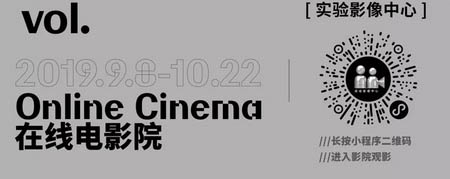
The term ‘operation’ refers to operating methods of a ‘cybernetic system’. An automated, organic world of mega machines which evolve automatically by means of feedback. As people are confronted with this rapidly growing machine world, i.e. operations themselves, they can’t deny that ‘human-in-the-loop’ machine learning is already nascent in certain aspects of our lives. We have faith in and have even grown accustomed to these ‘operations’. And yet, dread sets on in other parts of our lives, as people’s subjective bodies and existences are being substituted in these myriad operations by an ecological relation of connectivity, making them no longer problematic.
In contrast with the term ‘operation’ (运yùn), the word ‘calculation’ (算suàn) denotes the varied range of outcomes borne from all sorts of relationships. The boundlessness of the notion of ‘operation’ is in stark contrast with the limited nature of ‘calculation’, which highlights the finiteness of the world. People are becoming increasingly aware that the power of ‘operations’ still follows from or is tightly linked to the power of capital, whereas ‘calculation’ is so gargantuan and all-encompassing that people have no choice but to take on the role of recipient or consumer. Exposed to such circumstances, the artist experiences an unmistakable sense of disappearing from view. In the works of the artists, this vanishing and their entailing response helps them topologically carve out a position or a space, i.e. the Lacanian notion of “<>” ($<>a).
With this in mind, taking apart the bi-syllabic Chinese word 运算yùnsuàn, whose individual parts denote ‘operation’ and ‘calculation’, inadvertently gives rise to a phantasmagoric purpose, with ‘operations’ and ‘calculations’ respectively leading towards predetermined directions, along with conjecture and assessments regarding this purpose. Converse to what arises in this increasingly suffocating and conspicuous ‘cybernetic system’, art not only impedes relations of dominance from being conceivably formed between ‘operations’ and ‘calculations’, but above all helps pry open a narrative space, thus hampering the precision of these ‘operations’ and ‘calculations’.
Artist Wu Chi-Yu demonstrates the way in which feedback and corrections taking place in automatic writing render validation increasingly absurd; artist Wu Sih-Chin cross-validates his fieldwork in search of the Negrito people with back-end modeling, thus letting both engage in dialogue, ultimately showcasing the inevitable process of the complexification of ‘names’ in the context of digital technology; by ‘re-narrating’ the real lives of others, Hsu Che-Yu manages to graft singular human lives onto a more expansive theme; Chang Wen-Hsuan, in turn, makes use of the internet to complete a diary-style work, in response to the grand narratives which consistently occur at “documenta” (Kassel, Germany); through simulations of objects and topography, artist Liu Yu takes a new look at the worlds originally found in novels. All of these art film and video art creations generate a ‘flow’ between predetermined repetition and a formatted approach, a movement that is by no means situated along a single axis, but rather a ‘pulsation’ which enables life to breathe.
Hang Jianhong
July 28, 2019
策展人
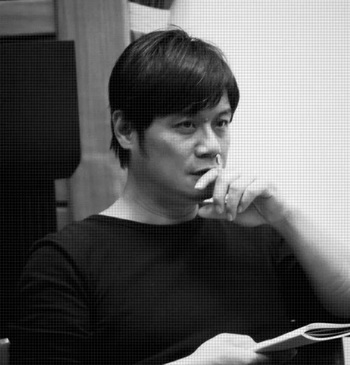
黄建宏︱HUANG JIANHONG
黄建宏(1968年12月1日-),台湾高雄人,毕业于东海大学化学系,之后前往巴黎。在贾克·洪席耶的指导下于2004年取得巴黎第八大学哲学所美学组博士。2005年起先后任教于世新大学广电系、台南艺术大学造形艺术研究所、国立台北艺术大学艺术跨域研究所副教授,2017年任国立高雄师范大学跨领域艺术研究所副教授兼任所长,2018年起担任国立台北艺术大学艺术跨域研究所副教授及关渡美术馆馆长。
研究专长关于影像研究、美学理论、当代艺术思潮、哲学、策展研究。书写内容著墨在电影、影像、当代艺术与表演艺术的评论,见于《电影欣赏》、《今艺术》、《当代艺术与投资》、《艺术家》。并从事法国当代理论,如吉尔·德勒兹、尚·布希亚与贾克·洪席耶等人著作的翻译。著有《CO-Q》(2009)(与苏育贤合著)、《一种独立论述》(2010)、《从电影看》译文论集(合编)、《浑变:编织未知的亚洲工作日志》(与后藤繁雄合编,2011)、《蒙太奇的微笑:城市影像/空间/跨领域》(2013)、《电影,剧场和运动》(2015)、《N度亚洲:穿越剧调研》。译有《影像的宿命》、《电影 I:运动.影像》、《电影II :时间.影像》、《波湾战争不曾发生》(合译)、《独特物件-建筑与哲学的对话》(合译)。
策展包括国立台湾美术馆线上展览《Ex-ception》(2007)、《S-HOMO》(2009)、《后地方 :post.o》(2009)、与中国OCAT合作策展《从电影看》(2010)、《浑变New Directions: Trans-Plex Weaving Platform》台日交流展(2011)(与后藤繁雄共同策展)、视盟艺博会《日光浴》特展(2011)、日本艺术团队Chim-Pom于台湾的《美丽世界:倖存之舞》(2012)、台北当代艺术馆《心动EMU》特展(与张晴文共同策展)、《台湾分裂2.0 》(Schizophrenia Taiwan 2.0,2013)(共同策展)、《NG的罗曼史》、《运动之后:穆勒咖啡之夜》(Post-Movement,2014)、韩国亚洲文化殿堂《穿越剧:在台湾各阶段生命政治与运动的档案文件史》(2015)。2015年起与神谷幸江(Kamiya Yukie)、金宣廷(Sunjung Kim)、卢迎华(Carol Yinghua Lu)共同策画《失调的和谐》(discordant harmony)系列展览,此展览也分别于韩国Art Sonje Center(2015)、日本广岛市立当代美术馆(2015)、台湾关渡美术馆(2016)、北京中间美术馆(2017)展出。2018年为就在艺术空间规划《就在『时区』Voir làin Time Zones》十週年特别计划首档展览《3D Sunset城·世灵魂》法哈廷·奥伦利个展、台北当代艺术馆策展《穿越-正义:科技@潜殖》。
Associate Professor of Graduate School of Interdisciplinary Arts
National Taipei University of Arts, Institute of Trans-disciplinary Arts
Born in Kaohsiung City, Taiwan, Based in Taipei, Taiwan
2018- associate professor of Institute of Trans-disciplinary Arts and director of Kuandu
Museum of Fine Arts, at Taipei National University of Arts
2017- 2018 associate Professor and chairman of Graduate School of Interdisciplinary Arts, at
National Kaohsiung Normal University
2008-2017 associate professor of Institute of Trans-disciplinary Arts, at Taipei National
University of Arts
2006-2008 assistant professor of Institute of Plastic Art in Tainan University of Art.
2005-2006 assistant professor of Cinema department in Shi-Shin University.
1997-2004 Phd of University of Paris 8 Vincennes-St. Denis under the direction of Jacques
Rancière (2004), with thesis on the theory of the cinema of Deleuze.
1987-1992 Study 4 years of Chemistry in the Taichung city in Taiwan.
Scholar works:
2018 guest scholar of Vitamin Creative Space, GwangZhou, China
2012-2015 member of editorial committee of New Media (Trans-Media School of China
Academy of Arts), HangZhou, China (CSSCI)
2011-2012 member of editorial committee of Contemporary Art and Investment, Beijin
2008-2016 member of editorial committee of Router (Association of Cultural Studies),
Taiwan (TSSCI, THCI Core)
艺术家
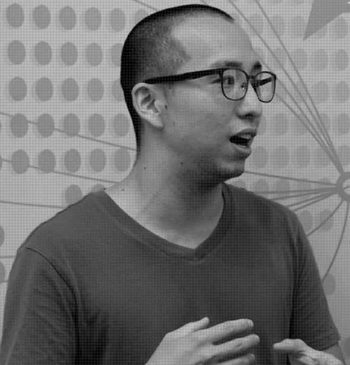
吴其育︱Wu Chi-Yu
吴其育(b. 1986,台北),作品的基本关怀在于找寻如何在被技术-资本主义摧毁的废墟中重建人、事物、动物与世界连结的方式。其创作主要以动态影像为主,同时也进行装置、影像装置与表演等不同类型的合作计画。
吴其育曾进驻于荷兰皇家艺术村(Rijksakademie,阿姆斯特丹,2014-2015)。个展:时间91平方米(TKG+ Project,台北,2017)。参与联展:上海双年展(上海当代艺术博物馆,上海,2018)、穿越正义(台北当代艺术馆,台北,2018)、台北双年展(台北市立美术馆,台北,2016)、第二届CAFAM未来展(中央美术学院美术馆, 北京,2015)。参与的影展:北京国际短片联展(2017)、EXiS Festival,首尔(2017)、Arkipel Festival,雅加达(2016)。
Wu Chi-Yu’s practice shows a fundamental interest in how connections can be re-estab lished among humans, things, animals and the world in a ruined landscape resulting from technocapitalism. Using moving images, also include installation, video installati on, performance and other types of collaborative projects.
Wu Chi-Yu was a resident artist at Rijksakademie van beeldende kunsten (2014 -2015). He had the solo show: “91 Square Meters of Time” (TKG+Project, Taipei 2017). The exhibitions he once participated include: “The 12th Shanghai Biennale” (Power Station of Art, Shanghai, 2018); “Trans-Justice” (MOCA, Taipei, 2018); Taipei Biennial (Taipei Fine Arts Museum,Taipei, 2016). His films have been screened at the Beijing International Short Film Festival (2017); EXiS Festival, Seoul (2017); Arkipel Festival,Jakarta (2016)

吴思嵚︱Wu Sih Chin
1985年出生于台南,目前工作与生活于台北,作品形式涵盖雕塑、装置、影像等多媒体,诠释当代人类对于非人之物(涵盖动物、植物、产物等)的权力关係与现下处境。早期的作品多以雕塑为创作主轴,常将个人经验中偶遇的事与物作为取样对象,并透过模型化的手段,製作出强调过程与叙述性的雕塑物件。2013~2014年旅居澳洲一年六个月的时间,这段时间的经验,影响了近期的创作开始转向于人类、动物与自然之间的诠释方法,试图在这多向的关係中检视人类的意识形态与荒谬处境。
Born in Tainan in 1985, Wu currently lives and works in Taipei. The works contend sculpture, installation, video and mix media, explaining human relations with non-human things (covering animals, plants, products, etc.) and the current situation.Most of the early works used sculpture as the main form of creation, produced sculpture objects that emphasized process and narrative. The experience of living in Australia for a year and six months from 2013 to 2014, the experience of this period of time, influenced the way of interpretation in humans, animals, and nature, attempting to examine humanity in this multi-faceted relationship. Ideology and absurd situatio

刘 玗︱ Yu Liu
我的创作生涯从2014年开始,逐渐发展出一系列纪录式田野的工作模式。从人类的视点、空间属性的变化与物在体系中流动的身份,作为勾勒人类演进的过程。从隐匿在社会结构下的族群作为研究主题发展了一系列的作品,这些族群的存在总是可以对照出当下社会或历史结构中的时间切面,将我们日常熟悉严谨的体制、科学方法做一种模糊分界的重组工作。
作品中参考了多种影像语彙的原形,从文字出版、纪实影像仿电影形式、类纪录片的形式,由于大量现地的田调与文献资料的搜集,也促使我重新编排了这些语言的可能,从空间、历史、影像、叙事各种零碎的片段,做一相互紧密连结、补叙的整合工程。
Starting from 2014, I gradually develop a series of field studies of documentary nature as a kind of working methodology in relation to my artistic practice. How human visions the world, how attributes of spaces change, and how things are constantly being defined in a system — these all contribute to giving an account on the progression of humanity. A series of works are later created with a research focus on less visible communities marginalized by structural societal factors. The existence of these communities often reflects the intricacies of its contemporary society, and, furthermore, offers a sample of a specific historical moment with regard to a grander context—a boundary-breaking reexamination that helps disrupt strictly defined scientific methodologies and the science institution with which we are all too familiar.
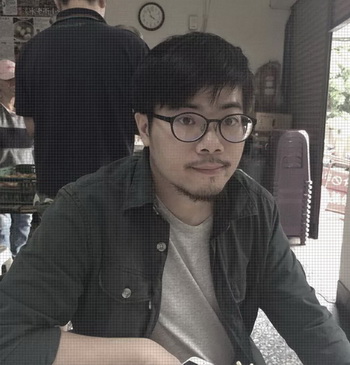
许哲瑜︱SHEN JIE
1985年出生于台北,毕业于台南艺术大学造形艺术研究所,2019年参与HISK(比利时高等艺术机构)为期两年的进驻计画(Post-academic residency)。现为自由艺术创作者,作品形式多以动画、录像、装置为主。作品关注媒介与记忆之间的关係,对创作者而言,无论是个人私密的或群体记忆,重要的并不只是透过媒介所能回溯的事件历史,更是记忆如何被建构与被观看的过程。
Hsu Che-Yu was born in Taipei in 1985. Earning his master’s degree from the Graduate Institute of Plastic Arts, Tainan National University of the Arts. From 2019 to 2020, he began to join the post-academic research programme HISK (Higher Insititute for Fine Art). Hsu Che-Yu works as an artist who primarily creates animations, videos and installations that feature the relations between media and memories. What matters to the artist is not simply the history of events traceable through media, but also the construction and visualization of memories, be they private or collective.
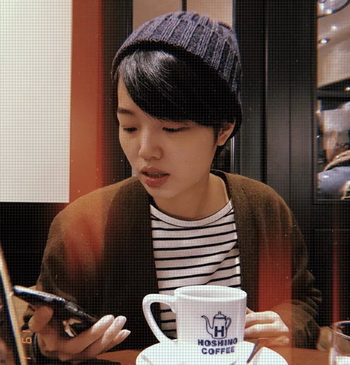
张纹瑄︱ ZHANG WENXUAN
张纹瑄的艺术实践透过重读、重写及虚构出另类方案,来质问机构历史的叙事结构,而暴露出潜藏在历史叙事中权力间的角力关係,也正是一种重新处理个人故事及历史书写之间的关係及能动性的方式。藉由不同的媒介——包含装置、录像及讲述 ——的使用,他经常用歪斜的文本及第一人称叙事让观者得以反思历史如何影响了当下的形塑及未来的推进。近期展览包括:「Neither black/red/yellow nor woman」(时代艺术中心,柏林,2019);「2018台湾美术双年展:野根茎」(国立台湾美术馆,台中,2018);「穿越─正义:科技@潜殖」(台北当代艺术馆,台北,2018);「2 Weeks 异度空间 #2:书写公厂」(台北当代艺术中心,台北,2018);「失调的和谐:二十世纪八、九十年代之交东亚艺术观察」(中间美术馆,北京,2018);「座标之外 · 演绎动词#3」(黑话计画空间,墨西哥城,2017);「2017 Musrara Mix 艺术节」放映项目(耶路撒冷,2017);「弗柯望放映项目」(弗柯望美术馆,埃森,2017);「健忘症与马勒维奇的药房」(台北市立美术馆,台北,2016)自2018年起开启〈书写公厂Writing FACTory〉长期计划。2019年参与新加坡NTU CCA驻留研究计画。
The artistic practice of Chang Wen-Hsuan questions the narrative structure of institutionalised history with re-readings, re-writing, and suggestions of fictional alternatives. To expose the power tensions embedded in historical narratives is a way of managing the relationships and dynamics between individual stories and the writing of history. Through versatile platforms including installations, videos, and lectures, she often navigates skewed documentations and first-person accounts to trigger reflections on how the understanding of history affects the purport of the present and thrust of the future.
Recent exhibitions include: “Neither black/red/yellow nor woman”, (Times Art Center Berlin, Berlin, 2019); “2018 Taiwan Biennial: Wild Rhizome” (National Taiwan Museum of Fine Arts, Taichung, 2018); “Trans-Justice: Para-Colonial@Technology” (MOCA Taipei, Taipei, 2018); “2 Weeks #2: Writing FACTory” (Taipei Contemporary Art Center, Taipei, 2018); “Discordant Harmony: Observations of Artistic Practices in East Asia at the Transition between the 1980s and the 1990s” (Inside-Out Art Museum, Beijing, 2017); “There after Here: Performing a Verb#3 kiss or kill? The body needs a verb to rehearse within a biography” (Vernacular Institute, Mexico City, 2017); “Musrara Mix Festival 17” Screening project (Jerusalem, 2017); “Video Folkwang” (Museum Folkwang, Essen, 2017); “Amnesia and Malevich’s Pharmacy” (Taipei Fine Arts Museum, Taipei, 2016). In 2018, she launched Writing FACTory. And in 2019, she participated in an artist-in-residence program in NTU CCA, Singapore

实验影像中心(Centre for Experimental Film,简称CEF),是一个致力于影像展映与研究的机构,也是一个专注影像实验的资料馆。通过在线电影院,实验影像中心定期上映艺术影片,邀约策展人策划和梳理展映专题,并为影像作品建立数字化的档案。与此同时,实验影像中心积极联动线下电影院,连接不同国家和地区的影像活动及各大电影节,促进影像展映的多重渠道交流,构建影像研究的多元文化生态。
除此之外,实验影像中心还将长期支持影像的创作、出品、制作等,包括继续对“艺术家的电影”的支持。
Centre for Experimental Film (CEF) is an institution dedicated to art film screening and study, with an archive focusing on digital image research and documentation. Through Online Cinema, CEF programs art film and video screening periodically, inviting professionals to curate screening series and documenting work in digital archive. CEF as well integrates with offline cinemas and interacts with regional and global film festivals. In all, CEF promotes a multichannel exchange on film and video screening and constructs a multicultural ecosystem in experimental film study.
In addition, CEF is committed to supporting the making, production and creation of artistic film and video, including unremitting support to the Artist Film, the Young Curator and the Young Director projects.
在线文化艺术(深圳)有限公司
/ Presented by & Lead Sponsor /
Art Films Online [Shenzhen]
【声明】以上内容只代表原作者个人观点,不代表artda.cn艺术档案网的立场和价值判断。

